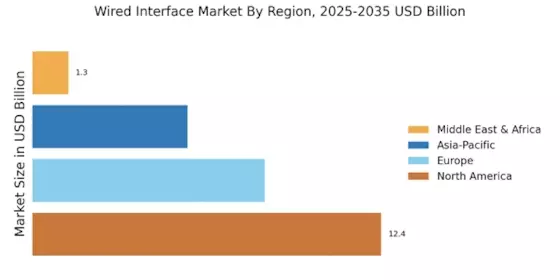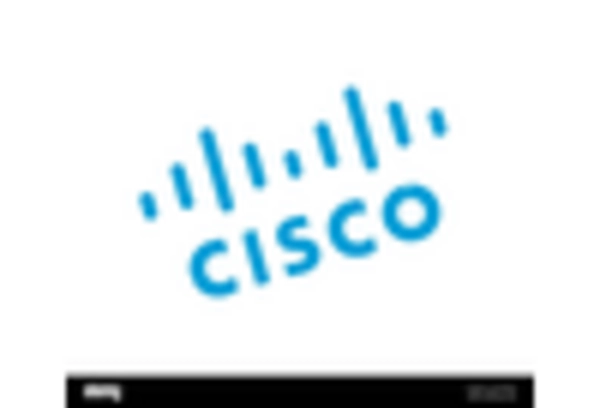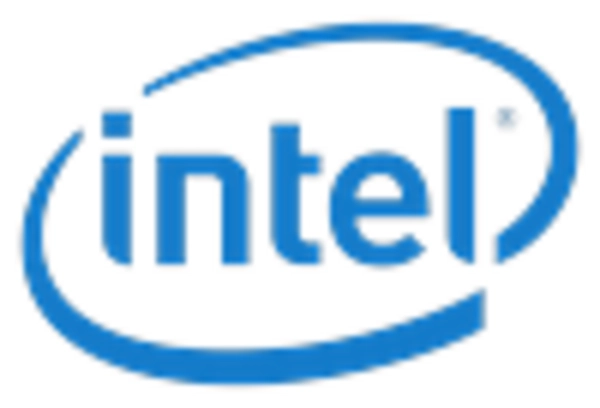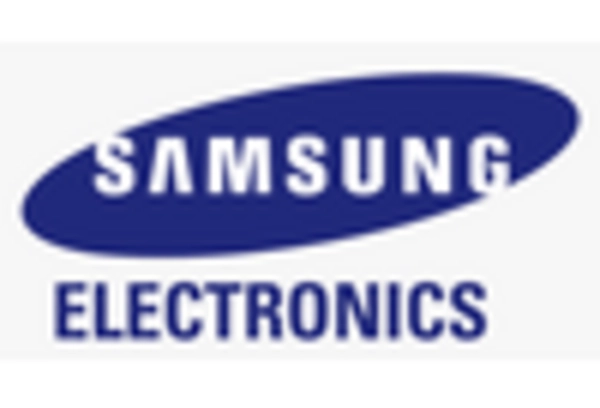Rising Adoption of IoT Devices
The Wired Interface Market is experiencing a notable surge in the adoption of Internet of Things (IoT) devices. As more households and businesses integrate smart technologies, the demand for reliable wired connections increases. This trend is driven by the need for stable and high-speed data transmission, which wired interfaces provide. According to recent data, the number of connected IoT devices is projected to reach over 30 billion by 2030, indicating a substantial market opportunity for wired solutions. The Wired Interface Market is likely to benefit from this growth, as wired connections are often preferred for their security and reliability compared to wireless alternatives. Furthermore, industries such as healthcare and manufacturing are increasingly relying on wired interfaces to ensure seamless communication between devices, further propelling market expansion.
Enhanced Data Security Requirements
In an era where data breaches and cyber threats are prevalent, the Wired Interface Market is witnessing a heightened emphasis on data security. Wired connections are generally perceived as more secure than wireless options, as they are less susceptible to interception. Organizations across various sectors are prioritizing secure data transmission, which is driving the demand for wired interfaces. For instance, financial institutions and government agencies are increasingly adopting wired solutions to safeguard sensitive information. The Wired Interface Market is likely to see growth as businesses invest in infrastructure that ensures data integrity and confidentiality. Moreover, regulatory frameworks mandating stringent data protection measures are further influencing this trend, compelling organizations to adopt wired technologies that align with compliance requirements.
Expansion of Smart Home Technologies
The Wired Interface Market is benefiting from the rapid expansion of smart home technologies. As consumers increasingly seek to automate their living spaces, the demand for reliable wired connections to support these systems is on the rise. Wired interfaces provide the necessary bandwidth and stability for devices such as smart thermostats, security cameras, and lighting systems. Market data suggests that the smart home market is expected to grow significantly, with projections indicating a compound annual growth rate of over 25% in the coming years. This growth is likely to drive the Wired Interface Market as manufacturers and service providers invest in infrastructure that supports the seamless integration of smart home devices. Furthermore, the trend towards home automation is expected to create new opportunities for wired solutions that enhance user experience and connectivity.
Increased Focus on Industrial Automation
The Wired Interface Market is experiencing growth due to the increased focus on industrial automation. As industries strive for greater efficiency and productivity, the demand for reliable wired connections in manufacturing processes is becoming more pronounced. Wired interfaces are essential for connecting machinery, sensors, and control systems, ensuring seamless communication and data exchange. Recent reports indicate that the industrial automation market is projected to reach over 200 billion by 2026, highlighting the potential for wired solutions in this sector. The Wired Interface Market is likely to capitalize on this trend as manufacturers seek to implement robust and secure wired networks that can support advanced automation technologies. Additionally, the integration of wired interfaces in industrial settings is expected to enhance operational efficiency and reduce downtime, further driving market growth.
Growing Need for Low Latency Communication
The Wired Interface Market is significantly influenced by the growing need for low latency communication, particularly in sectors such as gaming, finance, and telecommunications. As applications become more demanding, the requirement for instantaneous data transfer is paramount. Wired connections inherently offer lower latency compared to wireless alternatives, making them the preferred choice for applications where speed is critical. Recent studies indicate that wired connections can reduce latency by up to 50% compared to wireless solutions. This characteristic is particularly appealing in environments where real-time data processing is essential, such as in stock trading or online gaming. Consequently, the Wired Interface Market is poised for growth as businesses and consumers alike seek solutions that can deliver the speed and reliability necessary for modern applications.

















Leave a Comment